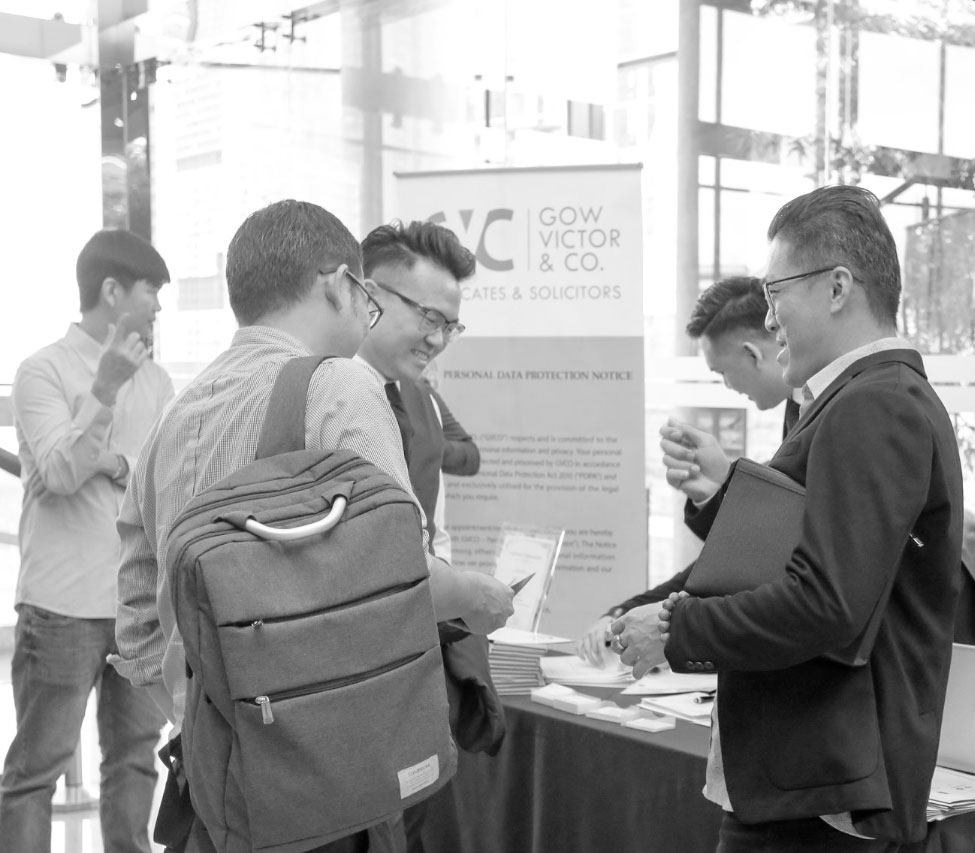Patent registration in Malaysia



Protect Your Invention with GVCO IP
Are you an inventor, startup, or business looking to protect your innovative ideas? At GVCO Intellectual Property, we specialize in Patent Registration in Malaysia, offering expert support throughout the entire process — from consultation to successful grant of patent.
What is a Patent?
A patent is an IP right granted for new technology you have invented. It is legally enforceable and gives you the exclusive right to commercially exploit your invention for the term of the patent. You can also obtain patent protection overseas.
Why Patent Your Invention?
A patent gives you exclusive rights to your invention, allowing you to prevent others from making, using, or selling it without your consent. In Malaysia, patent protection can last up to 20 years from the filing date, offering long-term commercial advantage and market security.
What Can Be Patented filed as a Patent?
In Malaysia, an invention must meet the following criteria to be patentable:
- Novelty – The invention must be new and not disclosed anywhere in the world before the date of filing.
- Inventive Step – It must not be obvious to someone with technical knowledge in the field.
- Industrial Applicability – The invention must be capable of being used in some kind of industry.
The Patent Registration Process in Malaysia
1. Initial Consultation
Speak with our IP consultants to determine if your invention qualifies for patent protection.
2. Patent Search
We willconduct a patentability search based on the information provided to assess if similar inventions exist in Malaysia or other parts of the world. Upon completion of the patent search, we will advise on the patentability of the invention.
3. Drafting the Patent Specification
Our expert patent drafters will prepare the required documents, including technical descriptions, claims, and drawings.
4. Filing with MyIPO
Once the Patent Specification has been finalized, we will assist you in submitting the application to MyIPO (Intellectual Property Corporation of Malaysia).
5. Substantive Examination
MyIPO will assess your application for compliance and patentability.
6. Patent Grant
Upon receiving the clear examination report from MyIPO, your patent is officially granted and published in the Government Gazette.
Decision 1
Can I patent my invention?
A patent application can secure exclusive rights for an innovative device, machine, substance, process, or software—essentially anything that embodies industrial design and offers commercial utility, and technological advancements.
What Types of Inventions Can Be Patented?
To qualify for a patent under Malaysian law (Patents Act 1983), your invention must meet several key criteria:
1. It Must Be a Manner of Manufacture
Only tangible inventions that offer a practical application can be patented. This includes:
- Devices
- Machines
- Industrial processes
- Chemical compositions
- Software with a technical application
Not eligible: Artistic works, business methods, theories, mathematical models, or mental processes.
2. It Must Be New (Novelty)
The invention must be original and not disclosed publicly anywhere in the world before the date of filing. Prior disclosure can include:
- Published patents
- Academic journals
- Public use or sale
- Demonstrations or trade shows
- Online publications
3. It Must Involve an Inventive or Innovative Step
- Standard Patent: The invention must not be obvious to someone skilled in the relevant field.
4. It Must Be Useful (Industrial Applicability)
The invention should achieve what it claims. It must have practical utility and be capable of use in any industry.
5. It Must Not Have Been Secretly Used
If the invention has been used or disclosed privately or commercially before filing—without confidentiality—this may invalidate your application.
Additional Legal Requirements under the Patents Act 1983:
- Complete and Clear Description:
Your patent application must include all necessary technical details, such as:
- Description of how it works
- Drawings and diagrams (if applicable)
- Examples or embodiments
- Supported Claims:
- One Invention per Patent:
Patent vs. Design – Which One Do You Need?
- Choose a Patent if your invention’s value lies in how it works (technical function).
- Choose a Registered Design if your focus is on how it looks (aesthetic innovation or visual appeal).
Not sure what applies to your idea? Our consultants can advise whether you need a patent, design, or both.
Decision 2
Should I patent my invention?
A patent application can be submitted for various innovations, including industrial design, devices, machines, substances, processes, computer hardware and software, effectively covering nearly all commercially useful inventions in today’s market.
For a patent to be granted an invention must:
- the possibility of commercial returns outweighs the time, effort and money required to acquire and maintain a patent
- the limited monopoly a patent offers would help mitigate the risks of IP theft in the markets you are interested in
- you have the resources to manage your intellectual property
- a thorough search reveals no other similar technology
- you own the invention and have kept it a secret.
Patent Application Malaysia: File or Consider Alternatives?
1. Filing via a Patent Attorney:
- Reduces the risk of mistakes.
- Improves the commercial value of your patent.
2. Reasons Not to File a Patent:
- Being first to market may be more valuable than a patent.
- Filing a patent reveals your invention to competitors.
3. Market Leader Strategy:
- Products with short life-cycles benefit from establishing market leadership before competitors react.
- A trade mark may be a better asset, protecting the product’s name and brand values.
4. Limited Market Value:
- The cost of obtaining and maintaining a patent may not be justified for inventions with a limited market or when patent protection in certain countries is challenging.
5. Trade Secrets vs. Patents:
- Trade secrets, protected through confidentiality agreements, can offer indefinite protection.
- This strategy works best when the product is difficult to reverse engineer.
6. When to Consider a Patent:
- If your invention is new, not publicly disclosed, and has commercial potential, a registered patent (valid for 20 years) may be the right choice.
Related Services: Complete Your IP Protection Strategy
Your patent is just one part of your intellectual property ecosystem. GVCO IP offers a holistic IP approach, combining related services to build a solid IP foundation for your brand or business:
Protect your brand name, logo, or slogan in Malaysia and internationally. Ideal for patented products to prevent brand misuse.
2. Industrial Design Registration
Secure the visual appearance of your invention—perfect for consumer products where aesthetic appeal is key.
Automatically protect original content like software, documentation, or product manuals— often complementary to patentable innovations.
4. IP Litigation & Enforcement
Need to defend your patent rights? Our legal team provides robust enforcement services, including cease and desist letters, infringement litigation, and dispute resolution.
Need Help with Patent Registration in Malaysia?
GVCO IP is here to guide you through the entire patent application process — from eligibility assessment to drafting and filing with MyIPO.
Schedule a FREE Consultation today with our expert IP consultants to protect your invention the right way.
